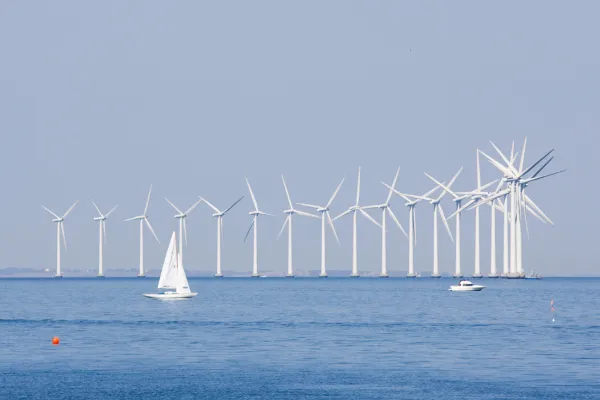
The Investment Landscape for Offshore Wind in 2025
The Investment Landscape for Offshore Wind in 2025
Offshore wind is one of the fastest-growing sectors in the global energy transition. But in 2025, the investment landscape is more complex than ever. Rising costs, global competition, and infrastructure bottlenecks are reshaping how and where capital is deployed. For investors and policymakers, the question is no longer whether offshore wind is viable — it’s where and under what conditions it remains most attractive.
Global Momentum, but Uneven Growth
2023 was a record year for offshore wind investment, with $76.7 billion invested globally — a 79% increase on the previous year . By the end of 2024, cumulative global capacity reached 83.2 GW, though annual additions slowed by around 26% compared to 2023 .
The market is heavily concentrated: China now accounts for ~50% of global offshore wind capacity, while the UK remains the second-largest market . Together with Germany, the Netherlands and Taiwan, these five countries made up 94% of new 2024 installations .
For investors, this means the global picture is strong — but capital is flowing towards regions with policy clarity, robust supply chains, and predictable returns.
UK Under Pressure
The UK still has the world’s second-largest fleet, with 15.9 GW in operation and an official target of 50 GW by 2030 . On paper, the pipeline is vast — more than 95 GW of projects in development . But delivery is lagging.
The UK’s latest Contracts for Difference auction in 2023 was a turning point. For the first time since 2015, no new offshore wind projects were contracted, as developers refused to bid at the government’s maximum price of ~£44/MWh . With project costs up 30–40% since 2022, those strike prices were no longer viable .
The fallout was immediate: Vattenfall cancelled its 1.4 GW Norfolk Boreas project, taking a £430m write-down and warning that the UK “does not have the investment environment needed” to deliver its targets . Analysts now suggest the UK is on track for ~39–43 GW by 2030, well short of its ambition .
For investors, the message is clear: unless the UK adjusts its support framework, capital may flow to other markets offering stronger incentives and less risk.
Infrastructure Bottlenecks
Even where economics stack up, infrastructure is holding back growth. The UK faces:
Grid delays: A queue of 700–800 GW of projects waiting for connection, with some slots pushed into the 2030s .
Port constraints: Many sites need upgrades to handle 15 MW+ turbines, with expansions taking 6–10 years .
Vessel shortages: Only a handful of installation vessels globally can manage the largest turbines, and day rates are rising as demand outstrips supply .
These are not small hurdles. They directly impact investor confidence by raising delivery risk and threatening returns.
Costs and Competitiveness
After a decade of falling costs, offshore wind has entered a turbulent period. Turbine and financing costs have added 30–40% to project budgets since 2022 . While offshore wind remains cheaper than gas-fired power (~£44/MWh vs ~£114/MWh) , investors are scrutinising risk more carefully.
The UK’s experience in 2023 shows that ultra-low strike prices are no longer sustainable. Investors will prioritise markets that offer realistic pricing, inflation protection, and risk-sharing mechanisms. That’s why upcoming auctions in 2024–25 are critical tests of whether the UK can restore confidence.
Where Capital Will Flow in 2025
The fundamentals remain strong. Offshore wind attracted record global investment in 2023, and governments across the US, EU and Asia continue to raise capacity targets . But capital is becoming more selective.
In 2025, investors will focus on:
Policy certainty — auction design, inflation indexation, and contract stability.
Infrastructure delivery — evidence that ports, vessels, and grid capacity are scaling.
Financial sustainability — strike prices that balance affordability with bankability.
The UK can still compete — but only if it adapts quickly. If it does, it remains one of the world’s most attractive markets. If not, investors will increasingly look to the US, EU, and Asia for growth opportunities.
